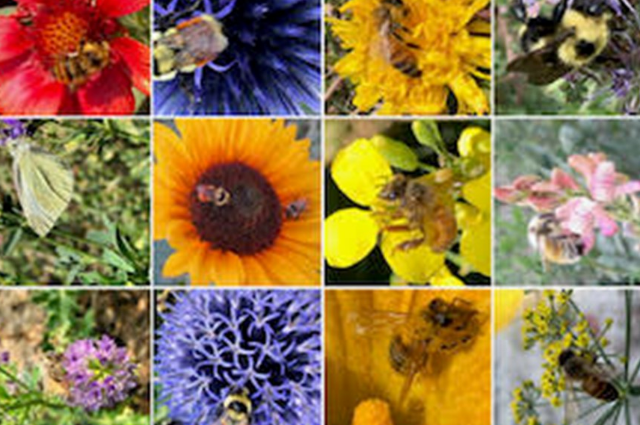We as humans have devastated our planet by bringing in innumerable irreversible anthropogenic changes to make our life easier. Unfortunately, though our socio-economic and technological progress has only negatively impacted our nature and natural ecosystems. Pollution from our expanding agriculture and industry, forest fires, grazing in restricted wildlife areas and forests, over-exploitation of major and minor forest products, illegal wildlife trade and trafficking, poaching, encroachments inside the forest belts, over-exploitation of natural resources from coal, oil, gas, minerals, forests, both surface and groundwater reservoirs, Climate Change, Global Warming, rise in sea levels, Green House Gases, Green House Effect, depletion of ozone layers, degradation of soil and over population of humans are some of the factors responsible for the rapid erosion of our global biodiversity.

The over-exploitation of our rivers and oceans together with coastal forest belts and estuarine ecosystems are causing the degradation of our aquatic biodiversity significantly without proper checks. Over-exploitation of natural resources is causing destabilization of nature causing flash floods, famines, droughts, and soil degradation due to loss of soul health resulting in poor soul health and low agricultural output. Soil is rich in both microflora and fauna. But the destruction of soil quality is deteriorating our soil biodiversity in the form of the loss of several soil bacteria, fungi, mycoplasma, invertebrates and vertebrates, and soil critters that are responsible for the maintenance of soil health and soil mega biodiversity. Thus through our own actions and ignorance, we are destroying biodiversity without acknowledging or understanding the long-term future impact on our overstretched planet.

Biodiversity Conservation refers to the practice of protecting the total number of species in a specific ecosystem or biogeographic area for maintaining healthy species populations and for restoring, conserving, and facilitating the enrichment of the natural environment and ecosystem. Major threats to biodiversity erosion include habitat fragmentation and habitat destruction, degradation, fragmentation, overexploitation, poaching, pollution, and climate change. According to IUCN approximately close to 25-27,000 global species of flora and fauna are now threatened with great risk of extinction. It has been acknowledged in both media and academic circles that we are missing species way faster than we are discovering, naming, and describing new species on our planet. It is alarming to note that significantly large numbers of our local, regional, and global ecosystems containing endangered and endemic species are disappearing very fast.

We can explore a few examples to better understand the conceptual aspect of global biodiversity erosion. Bees and other natural (biological) pollinators worldwide are showing a significant decline due to a number of anthropogenic factors. Bees are important natural cross-pollinators and essential for the survival of global agriculture, forestry, and apiculture industries. Over 85% of flowering species including several commercially important food and industrial crops as well as forest species are directly dependent on natural pollinators like bees for their pollen transfer for the purpose of reproduction and securing the future of the next generation of plants. However, excessive applications of agrochemicals such as toxic pesticides, loss of bee foraging vegetation, change in land use patterns, overconsumption by humans, Climate Change, poor immunity and both biological diseases as well as Colony Collapse Disorder (CCD) are causing havoc in the death of bees worldwide. This industrial agriculture has been wiping out bee species pushing them towards extinction. Loss of bees and other pollinators means the complete annihilation of the human society.

One of the largest land mammal elephants are migratory animals; and they need to move between forests for the purpose of foraging, resting, breeding and locating other resources such as water and mud bath points for their healthy existence. Unfortunately, due to anthropogenic impacts, elephant corridors across Africa and Asia have been rapidly destroyed, disrupted, damaged and altered for making wag to agriculture, industry and infrastructural developments. Unplanned growth and development in premier elephant habitats for selfish human needs and greed have restricted the pachyderms in small isolated pocket habitats detrimental to both the good health and genetics of this majestic mammalian species. Elephants cross state and provincial boundaries and often international borders for their annual migrations.

Not respecting the needs of the pachyderms has thereby increased unwanted human-elephant conflicts that are detrimental for both species resulting in death, destruction and damage. The helpless animals are being forced to enter human settlements as their traditional migratory routes are being blocked, transformed and destroyed, and are then blamed for their destructive behaviours throughout their native range. To avoid such unwanted interactions, we need to respect the wildlife coordination avd traditional migration routes of elephants; and seriously need to accommodate their lifestyle requirements within our development projects. Unmonitored and unplanned, legal and illegal economic growth will only destroy our common future. We need to act judiciously to cater to the needs of our wild coinhabitants of this planet.

In conclusion, we have to say that it is important for all of us to learn to become responsible for our own actions. For a long we have been pretending as if we do not know anything or we do not understand what we are doing towards our biodiversity erosion globally. It is necessary to generate education and awareness about our natural environment and ecosystems among the public to sensitize them about our immediate global environmental challenges. We need to emphasize on the sustainable use of natural resources with the strong political will to strictly frame and execute appropriate environmental legislations to protect our green planet. Over-application of toxic pesticides and agrochemicals is destroying our nature. We need to be responsible enough to allow nature to thrive while securing our economic interests. It is important that we jointly manage our natural resources for better utilization and to limit environmental pollution. Unless we learn to work together with others on a common platform, minute changes are never going to be enough to protect our vulnerable global biodiversity. All of us need to join hands to make a difference to create a better world rich in biodiversity for our future generations.

